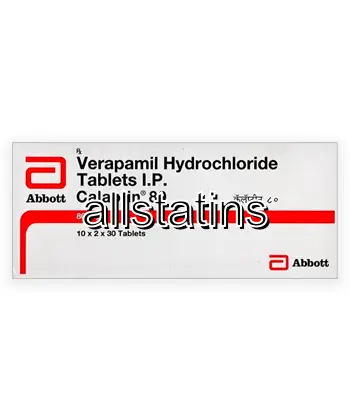| Package | Dosage | Price | Price per Dose | |
|---|---|---|---|---|
| Dosage: 40mg | ||||
| 270 pill | 40mg | AUD144.25 | AUD0.53 | |
| 120 pill | 40mg | AUD80.13 | AUD0.67 | |
| 90 pill | 40mg | AUD66.77 | AUD0.75 | |
| 60 pill | 40mg | AUD53.41 | AUD0.88 | |
| Dosage: 120mg | ||||
| 270 pill | 120mg | AUD325.94 | AUD1.20 | |
| 120 pill | 120mg | AUD162.96 | AUD1.36 | |
| 90 pill | 120mg | AUD133.57 | AUD1.50 | |
| 60 pill | 120mg | AUD106.85 | AUD1.79 | |
| 30 pill | 120mg | AUD69.44 | AUD2.32 | |

Verapamil Hydrochloride Description
Introduction to Verapamil Hydrochloride
Verapamil Hydrochloride is a medication commonly used to treat various heart-related conditions. It belongs to a class of drugs known as calcium channel blockers. These medications work by relaxing the muscles of the heart and blood vessels, leading to lowered blood pressure and a reduction in the heart's workload. Many patients find Verapamil effective in managing their symptoms and preventing complications associated with cardiovascular diseases.
Uses and Benefits
This medication is primarily prescribed for controlling high blood pressure (hypertension). It also helps to prevent angina pectoris, which is chest pain caused by reduced blood flow to the heart muscles. In some cases, Verapamil is used to treat certain types of irregular heartbeat, known as arrhythmias. Its ability to relax blood vessels improves circulation, alleviating symptoms such as chest pain, palpitations, and sometimes even migraines. Overall, Verapamil offers a comprehensive approach to managing various cardiac conditions.
How to Take Verapamil Hydrochloride
Verapamil Hydrochloride is available in tablet form and should be taken exactly as prescribed by a healthcare professional. It is typically taken once or twice daily, with or without food. To maximize its effectiveness and minimize side effects, it is essential to follow the recommended dosages and schedule. Patients should not adjust the dose or stop the medication abruptly without consulting their doctor. Regular monitoring of blood pressure and heart rate is often necessary during treatment.
Potential Side Effects
Like all medications, Verapamil Hydrochloride can cause side effects. Some of the common ones include dizziness, tiredness, headache, and flushing. Gastrointestinal issues such as nausea, constipation, or abdominal pain may also occur. In rare cases, more serious effects like heart rhythm changes, swelling of the ankles or feet, or allergic reactions can happen. Patients are advised to report any unusual symptoms to their healthcare provider promptly. Proper monitoring can help manage side effects and ensure safe use of the medication.
Precautions and Interactions
Before starting Verapamil Hydrochloride, it is important to inform your doctor about any existing health conditions, especially heart problems, liver or kidney issues, or if you are pregnant or breastfeeding. The medication may interact with other drugs such as beta-blockers, digoxin, or certain antibiotics. Combining these medications without medical supervision can lead to adverse effects, including dangerous heart rhythms or blood pressure drops. Patients should discuss all current medications with their healthcare provider to avoid potential interactions.
Who Should Avoid Verapamil Hydrochloride
This medication is not suitable for everyone. Individuals with a history of severe heart failure, certain types of arrhythmias, or low blood pressure should avoid using Verapamil unless explicitly advised by their doctor. Pregnant or nursing women should also consult their healthcare provider to weigh the benefits against possible risks. It is crucial to have a comprehensive evaluation before starting therapy with this drug, ensuring it is safe and appropriate for the patient's specific health condition.
Conclusion
Overall, Verapamil Hydrochloride is a valuable medication in the management of cardiovascular conditions. Its effectiveness in lowering blood pressure and relieving angina makes it a widely used treatment option. However, like all medications, it requires careful use under medical supervision. Patients should be aware of potential side effects and interactions to ensure safe and efficient therapy. Regular check-ups and adherence to prescribed instructions are key to achieving the best outcomes with this drug.